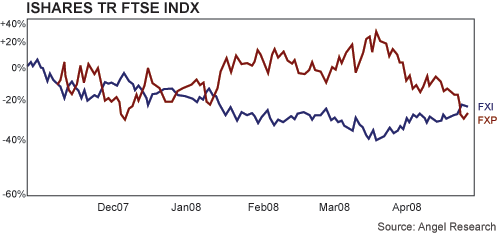Today let’s look at the second installment in our review of global opportunities—investing in international ETFs.
Last week we covered ADRs—American Depositary Receipts. My colleague, Steve Christ, has offered up heaps of profitable information on exchange-traded funds recently, highlighting key features like tax efficiency, lower expense ratios, high liquidity, and the ability to invest any amount you like.
All of these differentiate ETFs from mutual funds, and of course the “fund” aspect separates an ETF from a single stock, since you’re holding a basket of companies in just one ticker symbol.
But with internationally-oriented ETFs, you get added advantages and options to make money overseas without ever leaving your home.
International ETF Advantages
First, you can gain access to shares that are much less liquid and ones that have no ADR equivalent. Since the ETF creator such as PowerShares has put its money up, you have a layer of padding between you and the currency conversion, liquidity challenges, and potential overnight trading issues that can sometimes make international trading a headache.
The simple fact of a U.S. listing for these ETFs means they’ve jumped through the same regulatory hoops as any American stock, or any Wall Street ADR. Your money is safe and accessible.
But of course you still have to keep your wheels turning to make money.
Now, Steve and I, along with Ian Cooper of the Small Cap Trading Pit, bounce ideas off of each other all the time here in our Baltimore bullpen.
“Did you hear what’s going on in China?” “How about the dollar plunging?”
Now, we don’t always agree, but more often than not, we find that an ETF comes into the conversation as a perfect play—no matter if we’re bullish or bearish.
A perfect example of how this banter comes to fruition on the market is China, where you’ve got ETF options galore, whether you’re long or short.
Your China ETF Options
“I predict a Chinese market dive,” Steve chimed one day last fall. Sitting back in his chair, I knew from years of working with the guy that he wasn’t trying to be Nostradamus…
He was thinking of a stock play.
So I suggested AMEX:FXP. That’s the ProShares UltraShort FTSE/Xinhua 25 Index ETF.
FXP is a leveraged inverse ETF, meaning it returns twice the opposite of a “normal” ETF. In this case, FXP intends to book gains every time FXI—the FTSE/Xinhua 25 Index of leading Hong Kong-traded Chinese companies—takes a plunge.
Steve turned right around to his computer and banged out his recommendation.
One month later, Steve was sitting on 31% upside from his bet that Middle Kingdom shares would tumble.
See for yourself in the chart below:
In the past week, FXI has pulled back up after the Chinese government reduced the share trading stamp tax on April 23, making it cheaper to move stocks.
That national stimulus gave the direct index ETF nearly a $10 bump upwards, and brought FXP down further from its peak (where Steve and readers rightly took the money and ran).
And that’s another case-in-point of international ETF investing…
International ETFs give you a quick trigger for policy movements, commodity gains (the CurrencyShares Canadian Dollar Trust AMEX:FXC has been a great play on that resource currency), and even national elections, as we’ve seen with the NYSE:EWT iShares MSCI Taiwan fund gaining nearly 25% in 3 months.
You can sort through a slew of international ETFs at www.etfconnect.com. Just select a region, country or sector that interests you.
You’ve got the whole world in your hands with international ETFs.
Regards,

Sam Hopkins
By the way… The team at Global Growth Stocks is hard at work delivering international ETF gains, and we’re already in the green. Whether for long-term appreciation, rapid gains, and crisis or opportunity investing, you’ve got a buffet of global ETFs to choose from. To make sure you don’t miss the next ETF recommendation, check out GGS today: http://www.angelnexus.com/o/web/5477



